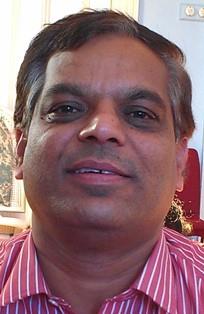IEEE EDGE 2021 - Keynote Talks

EDGE 2021 - Keynote 12
Rajkumar Buyya, University of Melbourne
December 20, 1:00 - 2:00 UTC; 9:00 - 10:00 Beijing Time
Neoteric Frontiers in Cloud and Edge Computing
Computing is being transformed to a model consisting of services that are delivered in a manner similar to utilities such as water, electricity, gas, and telephony. In such a model, users access services based on their requirements without regard to where the services are hosted or how they are delivered. Cloud computing paradigm has turned this vision of "computing utilities" into a reality. It offers infrastructure, platform, and software as services, which are made available to consumers as subscription-oriented services. Cloud application platforms need to offer (1) APIs and tools for rapid creation of elastic applications and (2) a runtime system for deployment of applications on geographically distributed computing infrastructure in a seamless manner.
The Internet of Things (IoT) paradigm enables seamless integration of cyber-and-physical worlds and opening up opportunities for creating new class of applications for domains such as smart cities and smart healthcare. The emerging Fog/Edge computing paradigm is extends Cloud computing model to edge resources for latency sensitive IoT applications with a seamless integration of network-wide resources all the way from edge to the Cloud.
This keynote presentation will cover (a) 21st century vision of computing and identifies various IT paradigms promising to deliver the vision of computing utilities; (b) innovative architecture for creating elastic Clouds integrating edge resources and managed Clouds, (c) Aneka 5G, a Cloud Application Platform, for rapid development of Cloud/Big Data applications and their deployment on private/public Clouds with resource provisioning driven by SLAs, (d) a novel FogBus software framework with Blockchain-based data-integrity management for facilitating end-to-end IoT-Fog/Edge-Cloud integration for execution of sensitive IoT applications, (e) experimental results on deploying Cloud and Big Data/ IoT applications in engineering, and health care (e.g., COVID-19), deep learning/Artificial intelligence (AI), satellite image processing, natural language processing (mining COVID-19 research literature for new insights) and smart cities on elastic Clouds; and (f) directions for delivering our 21st century vision along with pathways for future research in Cloud and Edge/Fog computing.
Recently, we witness the emerging advanced IoT applications in industrial internet, connected health, multi-robot systems, supply chains and other areas where the scale of the systems, the number of devices and data being generated continuously increases. They demand larger scale of the systems, higher intelligence of the connected devices, and better decision making leveraged by big IoT data analytics and the advancement of AI technologies. Edge computing is an emerging paradigm where the computation tasks are moved from centralized cloud to edge nodes which are closer to data sources. It facilitates the evolution of IoT from instrumentation and interconnection to intelligence. This talk shares our vision on future collaborative edge computing where edge nodes share data and computation resources and collaborate to perform tasks and achieve distributed intelligence. I will describe the major challenges such as distributed resource management, conflicting network flows, heterogeneous devices, and localized data sources, and share our works addressing the problems in distributed collaboration at the edge, including collaborative task execution, distributed machine learning, and distributed autonomous cooperation.